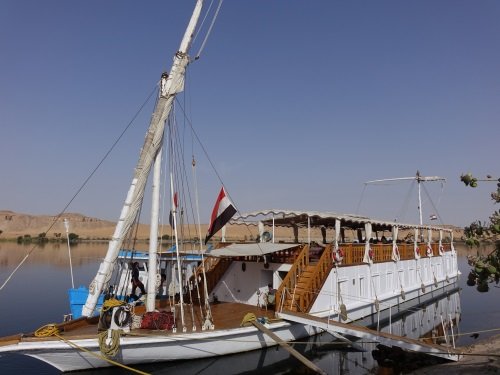Els Slots
Tips for travelling to Egypt
I have just returned from a 10 day trip to southern Egypt - only my first visit to this country (105 countries came before!). I ‘did’ the Luxor to Abu Simbel stretch, covering only 2 WHS and 1 TWHS. But it was well worth it, as these are undisputed members of our Top 200 WHS. Find below my Top Tips for Travelling to Egypt as a World Heritage Traveller.

Kids in Daraw
1. Go now to avoid the crowds
Since the Revolution of 2011, visitor numbers to Egypt have been low. Many trip reports that float around on the internet date back to over 10 years ago. Locals that I met were complaining that especially Europeans and Russians do not come anymore. Fortunately for the Egyptian tourism industry, the Chinese are not deterred. And high hopes are held for the Indians. In general it was relatively quiet everywhere I visited – especially in the cities and during the early or later hours of the day. A number of shops and restaurants in Luxor and Aswan seemed to have closed down. But there definitely were crowds at the Valley of the Kings and at the temple of Kom Ombo. Beach destinations such as Hurghada and a Nile cruise are still popular, so people take day trips from those bases. A recent claim that tourist levels are back to normal again is overstated though I think.
2. Take a Dahabiya Nile Cruise
Labelled as "The cruise for people who don’t like cruises” , I can fully recommend a Dahabiya Nile Cruise. I went upstream for 4 nights on board of the Dahabiya Zekrayaat - a large sail ship in the style of Victorian travellers (it even included a piano downstairs at that time). The romantic magic is diminished a bit nowadays as it needs a towboat to move ahead at a speed high enough to cover the distance between Luxor and Aswan within 4 days (a train on the same stretch takes only 3 hours!). We were 6 travellers (South African, Australian and Dutch), pampered by 10 staff including a formidable cook.

'My' Dahabiya Zekrayaat
3. It will be a classical trip for everyone
During our deliberations about the Top 200 WHS, noone had any doubt about including Egypt’s classical sites (Ancient Thebes, Abu Simbel, the Pyramids). Every serious traveller will be enriched by visiting these very ancient and unique sites. Touring them is inexpensive for the quality that you get to see – entrance fees to Abu Simbel or Karnak are a mere 5 EUR. And don’t underestimate Egypt as a nation, although it may not be at its prime at the moment it very much has its own soul.
4. Prepare yourself for what you want to see
Egypt is mostly a destination for package holidays and (large) group tours. This means that a one-size-fits-all approach usually is taken by its tourist industry. Scores of well-educated Egyptologists spend their days as guides going through the motions, rattling off all the dynasties in the right order and translating a couple of hieroglyphs here and there. Don’t let this industry decide how you will spend your days and what you will see. Do your own research beforehand. Include that recently opened tomb in the Valley of Kings (even for a surcharge) into your itinerary, find your way to those uncharted sublocations of a WHS, or that specialist museum. Cities like Luxor, Aswan and Abu Simbel are also very easy to navigate on your own.

Gebel el Sisila
5. Have a closer look at Egypt’s Tentative List (and beyond)
Egypte has relatively few WHS for its size and place in history. Consequently, its Tentative List is still full of sites well-worth a detour. In the southern part of the country, which was the focus of my trip, this certainly is true for the Ptolemaic sites Edfu, Kom Ombo and Dendera. I heard from fellow travellers that they found Abydos interesting too. And along the Nile we made a worthwhile early morning visit at Gebel el Sisila , which was a stone quarry for Ancient Thebes and holds a number of small rock-cut tombs.
More on
Els SlotsComments
No comments yet.
